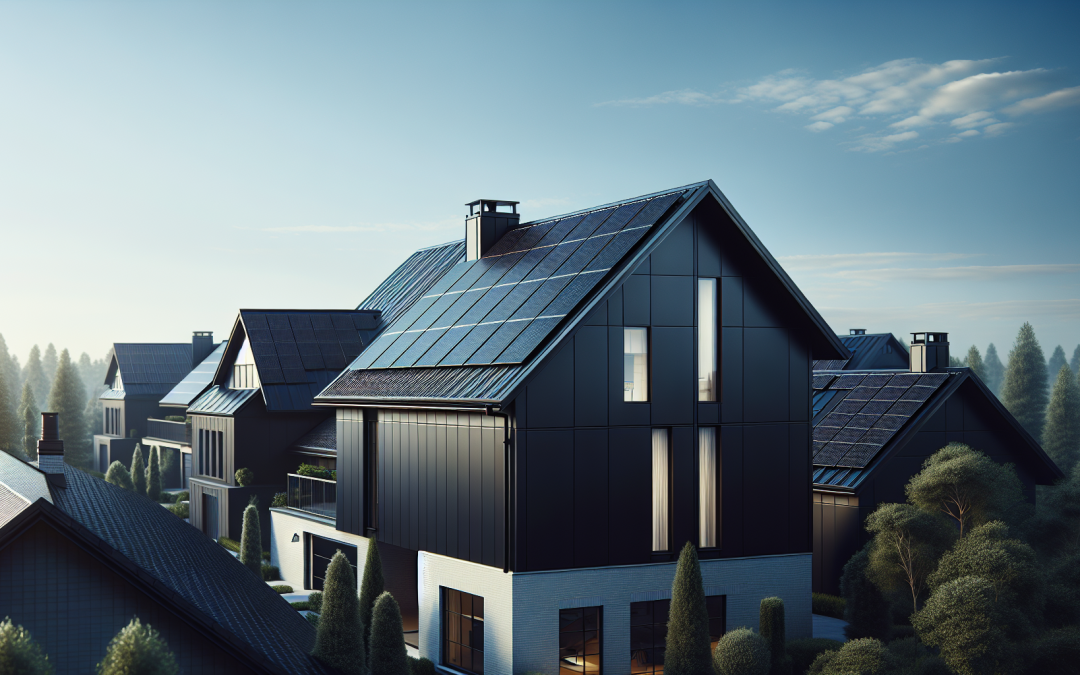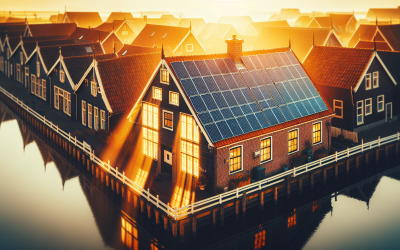So, you’ve decided to go solar and reduce your carbon footprint – great choice! But now you’re wondering, can I choose the color of my solar panels? After all, it would be ideal if they could match the aesthetic of your home or blend in seamlessly with your rooftop. Well, the good news is that yes, you do have some options when it comes to the color of your solar panels. While traditional solar panels are typically dark blue or black, there are now companies offering customizable solar panels in different shades and even patterns. Let’s explore the possibilities and see if you can personalize your solar system to suit your style.
Factors to Consider
When it comes to choosing the color of your solar panels, there are several factors that you need to consider. These factors include aesthetics, energy efficiency, cost, and local regulations. Each of these factors plays a critical role in determining which color option is the best fit for your solar panel installation.
Aesthetics
The aesthetics of your solar panels are an important consideration, especially if you want your solar panels to blend seamlessly with the overall look and style of your home. There are several factors to keep in mind when considering the aesthetics of your solar panels.
Blending with Roof
One important aspect of aesthetics is how well your solar panels blend with the color and style of your roof. Traditional dark blue or black panels tend to be a popular choice because they often complement various roof colors. On the other hand, if you have a lighter-colored roof, choosing a silver/grey panel might be a better option to create a cohesive look.
Matching Building Style
In addition to blending with your roof, it’s important to consider how well the color of your solar panels matches the overall style of your home. If you have a traditional-style house, dark blue or black panels might be the best choice. However, if you have a modern or contemporary home, all-black panels can provide a sleek and sophisticated appearance.
Enhancing Curb Appeal
Finally, consider how your solar panels will enhance the curb appeal of your home. While the primary purpose of solar panels is to generate renewable energy, their visual impact should not be overlooked. Choosing a color that enhances the overall appearance of your home can increase its resale value and make a positive impression on visitors.
Energy Efficiency
When it comes to solar panels, energy efficiency is a crucial factor to consider. Although color may not have a significant impact on the overall energy production of solar panels, it can affect their performance in terms of heat absorption and efficiency.
Effect of Color on Performance
While the color of the panel itself does not directly affect its energy production, it can indirectly impact performance. Dark-colored panels tend to absorb more heat, which can lead to a decrease in overall efficiency. However, advancements in solar panel technology have minimized this effect, making the color choice less significant than it once was.
Temperature Coefficients
Another aspect to consider is the temperature coefficients of the solar panels. Temperature coefficients indicate how much the panel’s efficiency decreases as the temperature rises. Different colors may have varying temperature coefficients, meaning that panels of different colors may perform differently in hot climates. It is important to consult with your solar panel provider to determine the temperature coefficients of the different color options available.
Panel Efficiency
The efficiency of the solar panels themselves plays a more significant role in energy production than their color. When choosing your solar panels, it’s essential to consider their overall efficiency rating, which indicates how effectively they convert sunlight into electricity. While color may have some impact on the overall aesthetics of the panels, the efficiency rating should be the primary consideration.
Cost
The cost of solar panel installation is an important factor for many homeowners. While the color of the panels may not directly impact the installation costs, it is essential to consider the overall cost implications before making a decision.
Standard vs. Custom Colors
In terms of cost, opting for standard colors such as traditional dark blue or black panels is often the most affordable choice. These colors are commonly available and do not require any custom manufacturing processes, resulting in lower costs. On the other hand, choosing custom colors may come with additional costs due to the need for special manufacturing processes.
Installation Costs
While the color of the panels itself may not impact installation costs, it’s important to consider any additional costs associated with the specific color option you choose. For example, if your chosen color requires more extensive cleaning or maintenance, it could result in higher ongoing costs over the lifetime of your solar panels.
Resale Value
Lastly, consider the potential impact on the resale value of your home. Solar panels are generally considered a desirable feature, and choosing a color that enhances the overall aesthetics of your home may increase its resale value. However, it’s important to consider the preferences of potential buyers in your area and weigh the potential increase in resale value against any additional costs incurred in choosing a specific color.
Local Regulations
Before making a decision about the color of your solar panels, it’s crucial to familiarize yourself with any local regulations or restrictions that may exist in your area. These regulations can vary depending on factors such as homeowner’s association (HOA) restrictions, historic district guidelines, and permitting requirements.
HOA Restrictions
If you live in a community with an HOA, it’s essential to review their guidelines regarding solar panels. Some HOAs may have restrictions on the color or placement of solar panels, so it’s important to ensure that your chosen color option complies with these regulations.
Historic District Guidelines
For homeowners in historic districts or properties with historical significance, there may be guidelines in place to preserve the architectural integrity of the building. These guidelines may include restrictions on the color or design of solar panels. Consult with local historic preservation authorities to ensure that your chosen color option meets these guidelines.
Permitting Requirements
In addition to HOA and historic district regulations, you should also consider any permitting requirements that may exist in your area. Local building departments may have specific guidelines and regulations regarding the installation and appearance of solar panels. Ensuring compliance with these requirements is essential to avoid any potential legal issues or penalties.
Available Color Options
Now that we’ve explored the various factors to consider when choosing the color of your solar panels, let’s take a closer look at the available options.
Traditional Dark Blue/Black Panels
One of the most common color options for solar panels is the traditional dark blue or black panels. These panels are widely available and often blend well with a variety of roof colors. They provide a classic look and are a popular choice among homeowners.
Pros
- Widely available and easy to find
- Generally blend well with various roof colors
- Suitable for a wide range of building styles
- Often the most affordable option
Cons
- May absorb more heat, potentially affecting efficiency
- May not be ideal for homes with lighter-colored roofs
- May not offer a unique or customized look
All-Black Panels
For homeowners looking for a sleek and modern appearance, all-black panels are an excellent choice. These panels have a uniform black color that provides a sophisticated aesthetic.
Pros
- Provides a sleek and modern appearance
- Frequently complements contemporary or modern architectural styles
- Often manufactured using monocrystalline silicon, which can offer higher efficiency
Cons
- May be more expensive than traditional dark blue or black panels
- May show dirt and dust more easily
- May have slightly lower efficiency due to increased heat absorption
Blue Panels
If you’re looking to add a pop of color to your solar panel installation, blue panels are a great option. They come in a variety of shades and can add a vibrant touch to your home.
Pros
- Adds a unique and eye-catching element to your solar panel installation
- Offers a range of shades to choose from
- Can be a statement piece for homes with a specific color scheme or design aesthetic
Cons
- May not blend as well with certain roof colors
- Limited availability compared to traditional dark blue or black panels
- May be more expensive than standard color options
Custom Colors
For homeowners looking for a truly customized look, some solar panel manufacturers offer the option to choose custom colors for your panels. This allows you to match the color of your panels to your specific design preferences or brand identity.
Pros
- Provides the opportunity for a unique and personalized look
- Allows you to match the color of your panels to your overall design aesthetic
- Can be a great option for businesses or organizations looking to showcase their brand identity
Cons
- Limited options for custom colors, as not all manufacturers offer this feature
- May come with additional costs due to special manufacturing processes
- Availability may vary depending on the manufacturer and region
In conclusion, choosing the color of your solar panels involves careful consideration of various factors, including aesthetics, energy efficiency, cost, and local regulations. While the color itself may not significantly impact the overall performance of your solar panels, it plays a crucial role in enhancing the overall look and style of your home. By weighing these factors and considering the available color options, you can make an informed decision that meets your needs and preferences.









